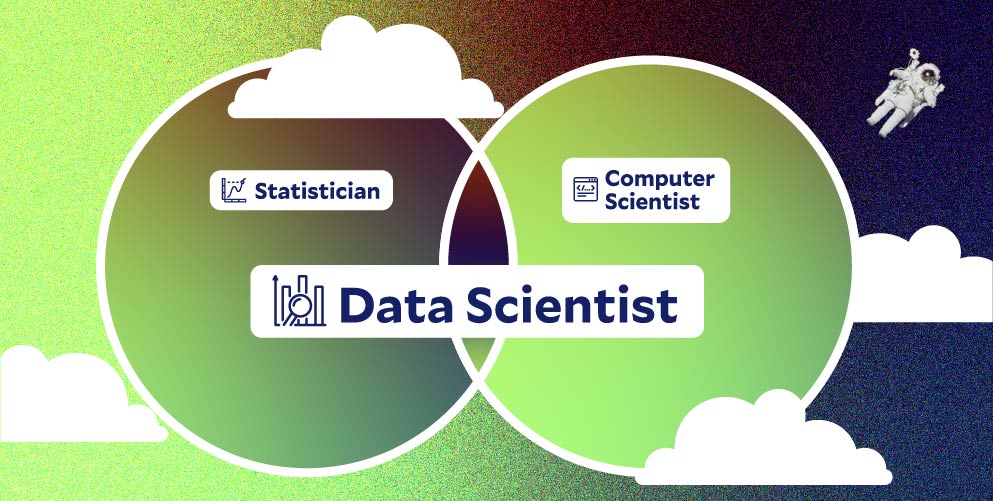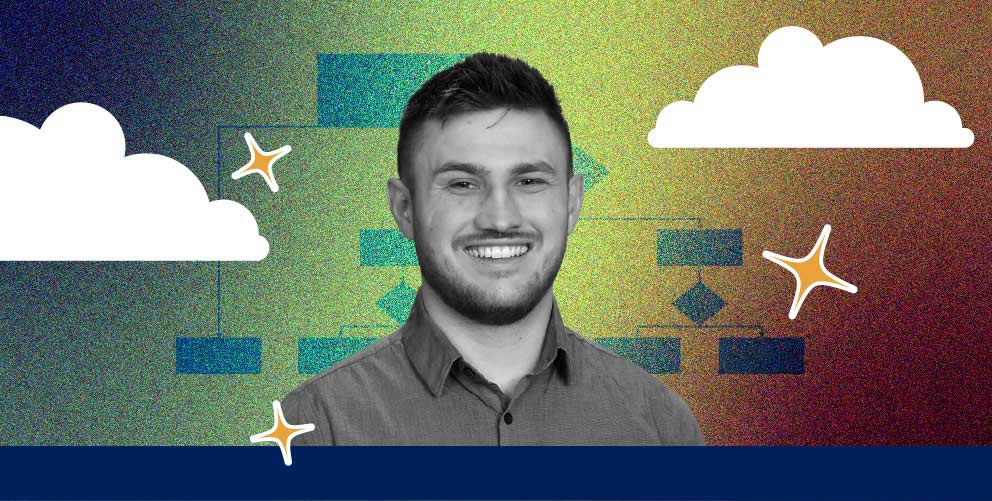Rice University OMCS student Keaton Parkinson included a graduate degree as part of his career advancement plan. He said a master’s degree is required for managerial roles and he was determined to cross that hurdle as soon as possible. Online options were important because Parkinson would complete his degree while working full-time as a tax technology consultant, but he remained undecided on whether to pursue data science or computer science. At Rice, he could explore both.
“In my current role at Ernst & Young, I am in the Tax, Technology, and Transformation department,” said Parkinson. “Our group focuses on using technology to improve and automate tax operations, often using data to find insights or tailoring software solutions to make the tax function more efficient. Our software stores fixed asset data and performs different tax calculations, so I need a strong computer science base to understand how the software works and strong data skills to clean the data and upload it into our databases.”
Master's in Computer Science vs Master's in Data Science
“At Rice, the core classes for the Master of Computer Science and Master of Data Science programs have a lot of overlap. In my first semester, I began to compare the kind of problems I wanted to tackle with the specialty tracks available to me at Rice. I found the broader skill set of the MCS program with a specialty track in data science to be a better fit for me, based on the current requirements for my job and for future jobs I hope to attain.”
Because he has taken courses in both programs and he collaborates on tax technology solutions for Fortune 500 clients, Parkinson has a unique perspective of how data scientists and software engineers differ and where they work together.
He said in his experience, data scientists are part statistician and part computer scientist. “Data scientists combine both worlds to analyze and interpret data that—in the end—is used to help make better data-informed decisions."

“Software engineers, on the other hand, are interested in building and customizing complex solutions with code. They need to ensure the software is secure, includes the right technologies and is maintainable. If you are more interested in finding insights to drive the decision-making process, the data science career path may be best for you. If you want to build complex software at scale, then a computer science career path may be your best fit.”
Data Science Applications in Accounting and Tax
The use of data science has become increasingly important across a wide range of industries, but accountants have been early technology adopters since adding machines were invented in the 1880s. General Electric purchasing a computer solely to run its factory payrolls in the 1950s and the launch of Quickbooks in the late 1990s put professional bookkeeping solutions into the hands of small business owners. It is no surprise that accountants and tax professionals are turning to big data technologies today.
Parkinson said, “There are many different areas of tax specialization; my focus is on research development credits and depreciation. If a large corporation acquires a building—perhaps as part of a merger—we will use a lot of depreciation tables for various assets like the computers and furniture on each floor and the building itself. Global organizations have billions of assets they need to depreciate and this amount of data is overwhelming for a standard accounting firm. They will hire specialists like our team, people at the intersection of computer science and data science, to get all those details into a database and perform calculations that are far beyond a simple spreadsheet.”
While much of his work focuses on fixed assets, Parkinson is also tasked with various data automation projects. One he recently worked on supported research and development credit. He said, “The Research and Development Credit incentivizes companies to invest in innovation. So, to calculate how much of a tax credit the company is eligible for we need to gather wages, supplies, and costs associated with the research and development activities going on at the company. I wrote code to help automate the surveys used to ask for this information and I also wrote code to automate the data cleanup and consolidation of the data after we have received it.”
He first made the connection between data science and finance as an undergraduate, when a professor showed him a stack of papers to be used in a meeting between an investment firm and their client. Each paper represented a different company and included images summarizing their financial ratios. The investment company was manually creating the charts in individual workbooks and trying to format each chart using the limited capabilities of the spreadsheet software.

“As the president of the Investment Society, I proposed and coordinated a joint project between our group and the Data Science Society. We automated the process using R and created a ‘Shiny Dashboard’ that used the company’s ticker symbol to import all their financial ratios and automatically create the charts for us. This automated the creation of the charts and it also created more professional and engaging images than the spreadsheet software. I think this is really where I discovered my passion for transformation and innovation in the finance and tax sector, and I still enjoy using technology to solve problems that previously took a lot of effort,” said Parkinson.
Deep Learning and Image Classification for Financial Documents
At Rice, he’s continued discovering innovative technology applications. He said one of his most memorable highlights was a course in his data science specialization. “We used machine learning (ML) to create neural networks and we learned the power of deep learning. I think the deep learning class impacted me the most because it opened my mind to what is possible.
“For example, in accounting, you could use convolutional neural networks for different image classification tasks. Take a picture of a document, have a human annotate it by drawing boxes around the important parts and identifying if that section is a table, or which part of the invoice to look at. Then train the ML model to identify those patterns so it can predict the contents of new, similar images. Other uses of deep learning in the accounting industry include categorizing bills, extracting data from invoices, and detecting fraud. I knew this sort of thing was possible, but I never realized I could do it myself and that was really exciting.”
Rice Online Programs’ Small Class Sizes and Faculty 1:1 Sessions
The flexibility of choosing both DS and CS courses was part of what drew Parkinson to the online Rice programs, but it was the class size that finalized his choice. He attended information sessions for similar online programs and felt like most of them admitted as many students as they could handle, but left the students to fend for themselves.
“It was obvious that Rice tries to keep their cohort small and that the instructors could and would make time for one-on-one sessions with their students,” said Parkinson. “If you are applying to one of the Rice online programs, be sure to forge connections with your professors and with other students as soon as possible. The Rice faculty care tremendously about their students and make time for 1:1 sessions with you, if you ask. The students share advice on which classes to take together, they can help teach you material you don’t understand, and you can help teach them.
“Working and going to graduate school is not easy. Be patient with yourself. With time you get into a good groove, and it gets easier to manage both. Remember to lean on your support systems even outside of your school channels. Sometimes you just need to reach out to a friend or family member and talk about what you are doing and going through.”
For more information about Rice University’s Online MCS and MDS programs, complete the form below to connect with a Rice enrollment coach who can consult with and guide you.

